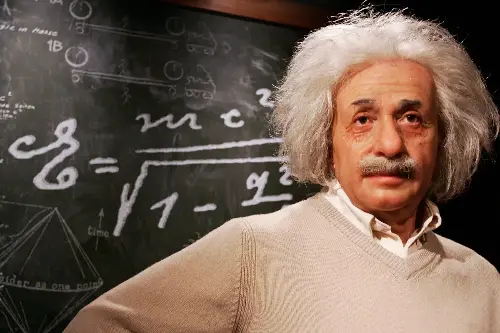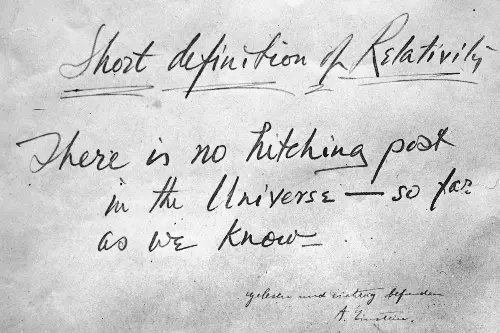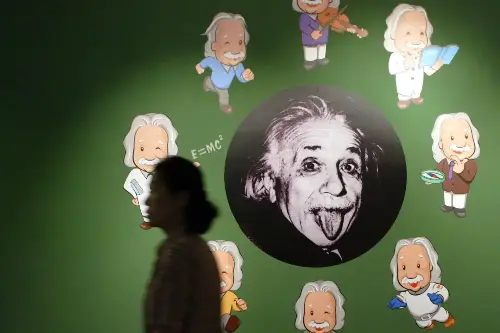Albert Einstein, a name synonymous with genius, offered the world a view of the cosmos that was both breathtaking and bewildering. His theory of relativity forever altered how we understand time and space, transforming these once-static concepts into a tapestry that bends and warps around the presence of mass and energy. It's a narrative where the universe plays by rules that seem to come straight from the pages of a science fiction novel – yet, this is the reality that engulfs us all.

Unfolding the Fabric of Space-Time
Einstein's relativity comes in two flavours: special and general. The special theory, introduced in 1905, melds space and time into a single continuum - spacetime. It tells us speed is relative; only the speed of light remains constant for all observers, regardless of their motion. This leads to fascinating phenomena such as time dilation – where time literally slows down for objects moving at high velocities, a principle that has real-life implications for satellite-based technology like GPS.
Diving deeper, general relativity, unveiled in 1915, expands on these concepts. If special relativity was the opening act, general relativity is the headliner. It postulates that massive objects like stars and planets warp the spacetime around them – envision a bowling ball sitting on a trampoline, creating a dip around it. This curvature dictates the gravitational pull, hence why objects fall towards each other, not because of an invisible force, but due to following the distorted paths in spacetime. It’s a poetic justice – mass creates the stage where it moves and interplays with force.
The Dance of Gravity and Light
General relativity birthed perhaps one of the most astonishing revelations about our universe: Even light, untouchable by Newtonian physics, must succumb to the curvature of spacetime. This prediction led to the first major experimental test of Einstein's theory during a solar eclipse in 1919. Stars which should have been hidden by the sun’s brilliance were visible from Earth, their light bending around the massive celestial body, affirming Einstein’s audacious claims. This phenomenon, now known as gravitational lensing, not only validates general relativity but also aids astronomers in studying objects too distant to be observed directly.
Gravity's Cosmic Chisel
Under the chisel of gravity, space and time yield to create cosmic spectacles. Black holes, those enigmatic maws of gravitational destruction, are a direct implication of Einstein’s equations. They are regions where spacetime has become so extraordinarily curved, due to an imploded mass, that not even light can escape their grasp. Their edges, known as event horizons, represent the ultimate point of no return, beyond which the universe's secrets are forever cloaked in darkness.
Neutron stars, too, owe their existence to Einstein's insights. These remnants of supernova explosions compress immense masses into the size of a city, producing spacetime curvatures so intense that they can accelerate nearby objects to significant fractions of the speed of light – a graphic illustration of the relationship between mass, spacetime, and velocity.

Time Travel and Relativity
Time travel, no longer a trope confined to the realm of science fiction, finds a theoretical playground in general relativity. Objects in strong gravitational fields – like those near a black hole – experience time at a slower rate compared to objects in weaker fields. Theoretically, if one could survive the journey near a black hole and return, they would find themselves in a future further along than if they had stayed at home – a practical, if extreme, application of time dilation.
Einstein's Legacy in Modern Science
The fingerprints of relativity are not confined to cosmic phenomena; they're woven into the fabric of modern technology. The very devices we use daily incorporate adjustments for the time dilation effects predicted by special relativity – without them, the precision of the global positioning system (GPS) would falter, leading to errors in navigation.
Further, the pursuit of a grand unified theory, one that could marry the quantum world with the cosmic tapestry of general relativity, continues to be the holy grail of modern physics. It's an endeavour that underscores the ongoing resonance of Einstein's vision, as contemporary scientists stand on the shoulders of this intellectual giant to peer further into the universe's mysteries.
Breaking Down the Complex into the Comprehensible
Einstein once remarked that if you can't explain a concept simply, you don't understand it well enough. It might seem that relativity, with its counterintuitive notions and mind-bending implications, defies straightforward explanation. Yet beneath the mathematical veneer and technical lingo, relativity embodies a symphony of natural laws that are both elegant and accessible.
Classrooms around the world teach these principles, often starting with the famous equation E=mc^2, which encapsulates the equivalence of mass and energy — a cornerstone of both special and general relativity. Museums, documentaries, and popular science books further demystify the topic, turning Einstein’s abstract magnum opus into engaging narratives that capture the imagination.

In the Grasp of Gravity's Grace
What Einstein unlocked was more than a set of equations; it was a new lens through which to view the universe. Time and space, once absolutes in the Newtonian cosmos, became malleable entities inextricably linked to the matter and energy that weave the fabric of our universe. Grappling with relativity can, at first, feel like trying to clutch at shadows – elusive and intangible.
Yet, as our understanding deepens, the elusive shadows cast by relativity’s monumental silhouette become pathways to enlightenment. We begin to appreciate the elegant ballet of celestial bodies, choreographed by the curvature of spacetime and the relentless tempo set by the speed of light. Gravity's grip, once thought straightforward, reveals a grace that guides the cosmos in a harmonious, albeit perplexing, dance — a grace that is as mysterious as it is majestic, welcoming us all to revel in its cosmic choreography.
